I’m not going to list Pandas, NumPy, Scikit-learn, Matplotlib, Seaborn, TensorFlow, PyTorch, etc.
You probably know about these already. There is nothing wrong with these libraries; they’re already the bare minimum essential for data science using python.
And the internet is flooded with articles about these tools — this piece won’t be one of them, I assure you, my friend. Also, we’ll not go into the debate of Python vs. R, both have their place in academia and the industry, but today we’ll focus on Python.
Particularly, this article would focus on slightly less-known yet valuable python friendly libraries. Starting from collecting data to analyzing, modeling the data, conducting experiments, and finally deploying the models, these libraries cover the entire data-science lifecycle.
Thanks to the development of these libraries and tools, people across the industry and entry barriers into data science development have diminished tremendously.
These libraries help you collect and synthesize data
Indeed, if we don’t have the data, there’s no further AI, machine learning, or data science. These libraries help us acquire actual data through the web and create synthetic data.

Scrapy is a fast high-level web crawling and web scraping framework used to crawl websites and extract structured data from their pages. It can be used for various purposes, from data mining to monitoring and automated testing.
I recall using this library when I had to scrape data from various sites to collect details and reviews about restaurants in a city, and it did the job well.
Even though Scrapy was originally designed for web scraping, it can also be used to extract data using APIs or as a general-purpose web crawler.

YData Synthetic is an open-source synthetic data engine. Using different kinds of Generative Adversarial Networks (GANS), the engine learns patterns and statistical properties of original data. It can create endless samples of synthetic data that resemble the original data.
Synthetic data is artificially generated data that is not collected from real-world events. It replicates the statistical components of actual data without containing any identifiable information, ensuring individuals’ privacy.
Having used synthetic data for several use-cases during my full-time work, I have personally contributed to this open-source project and believe synthetic data is the way to achieve high-quality data at scale while protecting the user’s privacy.
This library helps you fast-track EDA
Believe it or not, the data you’ve collected is always messy. We need to evaluate the quality of the data and uncover insights from the data.
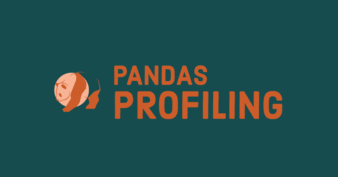
The promise of Pandas Profiling is plain simple; it helps fast-track your exploratory data analysis through quicker data understanding.
By adding two lines of code, you can generate a profiling report for your data to detect data issues and uncover any insights within a few minutes with this library. Pandas-profiling is a part of the Data-Centric AI community, which you too can join.
Every project I start, as soon as I have the data with me, I run it through pandas-profiling first to inspect the data, clean the data, and explore the data through the report generated.
These libraries help you model the data across domains
Thanks to the advanced libraries we have, data scientists spend less time doing the model part. These three libraries do a great job handling the complex algorithms under the hood and present simple interfaces for us to get the job done.

PyCaret is an open-source, low-code machine learning library in Python that automates machine learning workflows.
Compared to other machine learning libraries, PyCaret is an alternate low-code library that can be used to replace hundreds of lines of code with a few lines only.
You need to get your hands on PyCaret to understand how easy it is to start modeling the data in today’s world of data science. I continue to use this tool whenever I want to find the best machine learning model for the problem at hand.

Natural Language Processing (NLP) has become an evolving domain within AI and powers the solutions to various business problems with chatbots, translation services, sentiment analysis tools, and more.
While you can be in data science without having to work in NLP, should you choose to, Spacy is one of the best tools available to get you started.
spaCy is a library for advanced Natural Language Processing in Python and Cython. It comes with pre-trained pipelines and currently supports tokenization and training for 60+ languages.
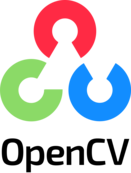
Similar to NLP, computer vision is another prominent field in AI and is used to solve tons of business problems, starting from image detection to theft prevention.
OpenCV (Open Source Computer Vision Library) is an open-source library that includes several hundreds of computer vision algorithms.
OpenCV carries the basics for image processing and computer vision and is essential should you choose to work with visual data.
This library helps you conduct ML experiments.
The key to a best-performing model is an iterative process of optimizing the chosen metrics for the business problem at hand. Experimenting is where your model moves from being an average one to a good one.
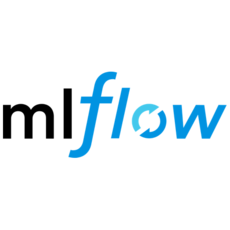
MLflow is an open-source platform to manage the ML lifecycle, including experimentation, reproducibility, deployment, and a central model registry.
In its essence, MLflow is much more than experiment tracking, but that’s a good starting point to incorporate into our data science lifecycle.
Personally, after incorporating this library, I have saved a lot of time in tracking and managing the experiments, models, and the results associated with them.
These libraries are your friend for deploying models
What’s the point of building machine learning models if nobody uses them? It’s vital to ensure that these models are deployed user-friendly.
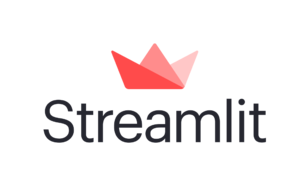
Creating a web app is a great way to showcase 100% of your projects, even if they’re pet projects for your resume.
Streamlit is an open-source Python library that makes it easy to create and share beautiful, custom web apps for machine learning and data science. Using Streamlit, we can build and deploy powerful data apps in a relatively short amount of time.
Streamlit is my go-to tool when I’m required to rapidly prototype the python modeling scripts into a web application in a few hours. The library is python and data scientist friendly, and you’ll be comfortable using it within a few days.
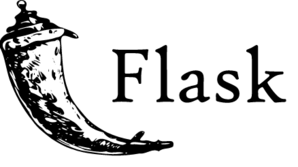
Flask is a lightweight Web Server Gateway Interface web application framework. It is designed to make getting started quick and easy, with the ability to scale up to complex applications.
Having started as a simple wrapper around Werkzeug and Jinja and has become one of the most popular Python web application frameworks
While Streamlit is great for rapid prototyping, Flask is another web-application tool that helps you create more complex and production-friendly web applications. When there’s more space for development, I know I can rely on Flask to help me transform my models into a web application, no matter how complex the requirements are.
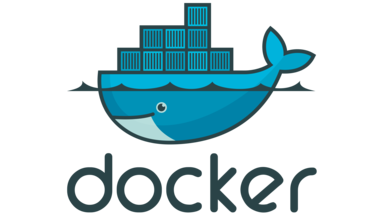
Docker is a tool designed to create, deploy, and run applications using containers. The docker container is nothing but a packaged bundle of application code and required libraries and other dependencies.
Now Docker isn’t specific to the AI world but is a standard software engineering and application development tool. How does it become relevant to AI? When you’re done cleaning the data, experimenting, modeling, and transforming it into web apps, it’s time to package the app independently of the development environment.
The final step before deploying the application is to ensure that the applications you’ve built are reproducible — and Docker helps you with it. Here’s a more detailed explanation of how data scientists can use docker.
Concluding thoughts
This article listed the top 10 data science tools across the data science life cycle. We detailed on crucial features of each tool and how they’re helpful should you choose to use them for your next project.
I know what you’re thinking — you’ve probably used an excellent data science library and wondering why it didn’t make it to the list. The field is vast, and the data science ecosystem is rapidly growing, so there’s always something more.
Let me know what you’d want to add to this list in the responses. But if you haven’t had a chance to use any of the above, you should check them out!
This blog has been republished by AIIA. To view the original article, please click HERE.


Recent Comments